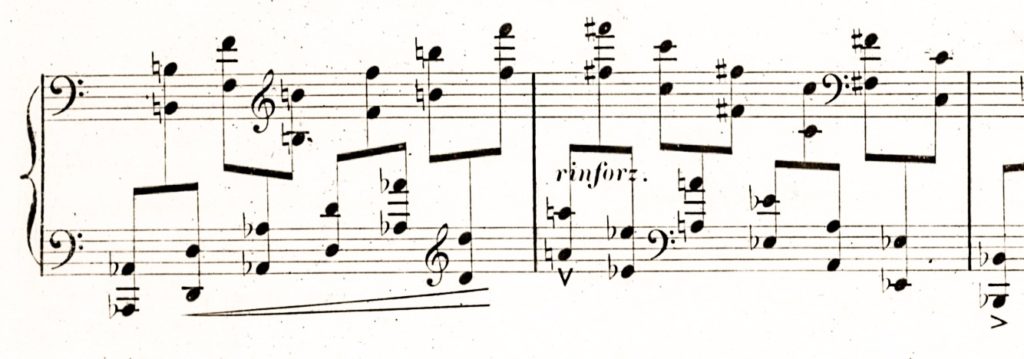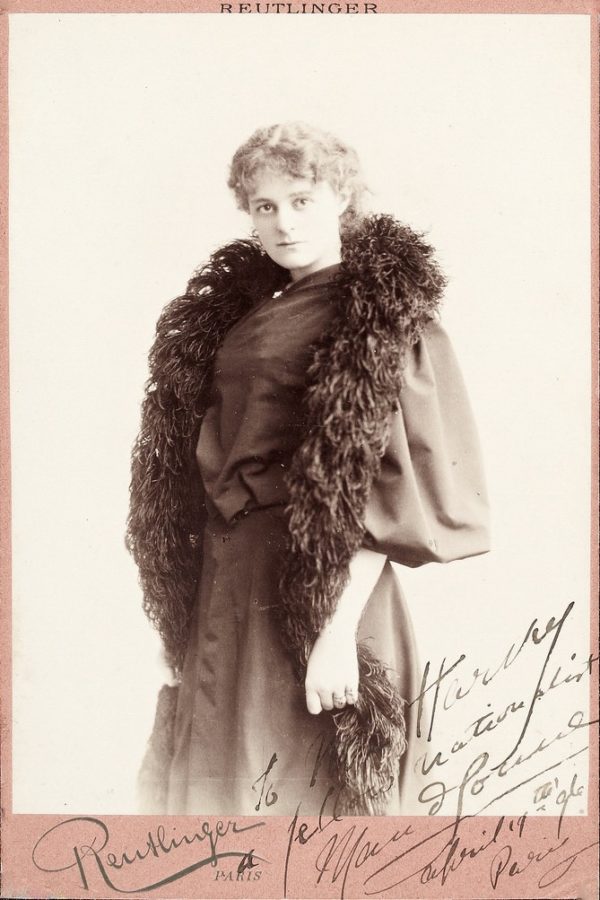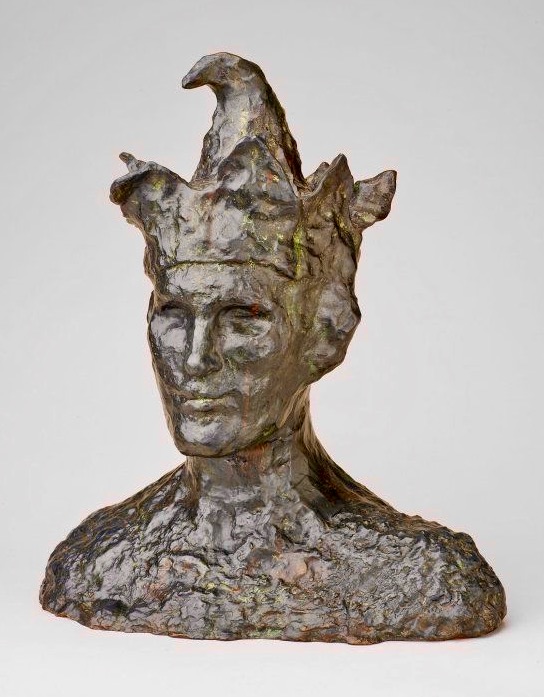After a prospective student played Maurice Ravel’s “Alborada del gracioso,” I asked the not-so-simple question: “What’s the melody?

Ravel: “Alborada del gracioso,” (1905) from Miroirs
The student did not have a ready answer; after a moment suggesting the opening melody might be the music played by the pianist’s left hand:

It seems to me that “Alborada” utilizes the technique (seen in Franz Liszt’s piano music) of dividing a musical line between left and right hands.

Liszt: Orage
In several instances, in texts by Liszt, the musical line is formed from the notes played by alternating left-hand and right-hand thumbs. In Ravel’s “Jester’s Morning Song,” the beginning melodic line is formed by the lowest notes played in the right-hand chords and the notes played by the left hand:

There are some collisions when both thumbs play at the same time. (In my opinion, at these collision points the thumbs should play together on the beat; the quick arpeggiated notes of the right-hand chords will happen after the beat.) Perhaps these collided “double notes” suggest highly-colored vocal sound, bent pitch, or a silly, mocking, thumbing-of-the-nose or through-the-nose style of song? Those quick arpeggiated chords might signify the jangle of tiny bells?
There is metric ambiguity: 2 strong accents per measure allow us to hear 2 groups of 3 eighth-notes, and yet, simultaneously, each measure of melody also seems to consist of 3 groups of 2 eighth-notes. This shadow hemiola is part of the mockery, the deliberate awkwardness, or swagger. It’s a chromatic sing-song of continuous eighth-notes.
Ravel’s “Alborada del gracioso” has intertextuality with W.B. Yeats’ poem that describes a jester wooing a queen, “The Cap and Bells.”
‘I have cap and bells,’ he pondered,
‘I will send them to her and die’;
And when the morning whitened
He left them where she went by.She laid them upon her bosom,
Under a cloud of her hair,
And her red lips sang them a love-song…
Here significant action is set in the morning — an “alborada,” a morning song. Yeats’ poem was published in 1899, the year he first kissed Maud Gonne, the person who may have inspired “The Cap and Bells.” Ravel composed “Alborada” in 1905; it was published in 1906. Also in 1905, Pablo Picasso sculpted The Jester. Works by Paul Cezanne and other European artists of the time featured commedia dell’arte and circus characters. The Cirque Medrano was popular with the artists of Paris.
In 1908, Yeats finally consummated his relationship with Maud Gonne.
Maud Gonne, circa 1896
Picasso: The Jester, 1905


